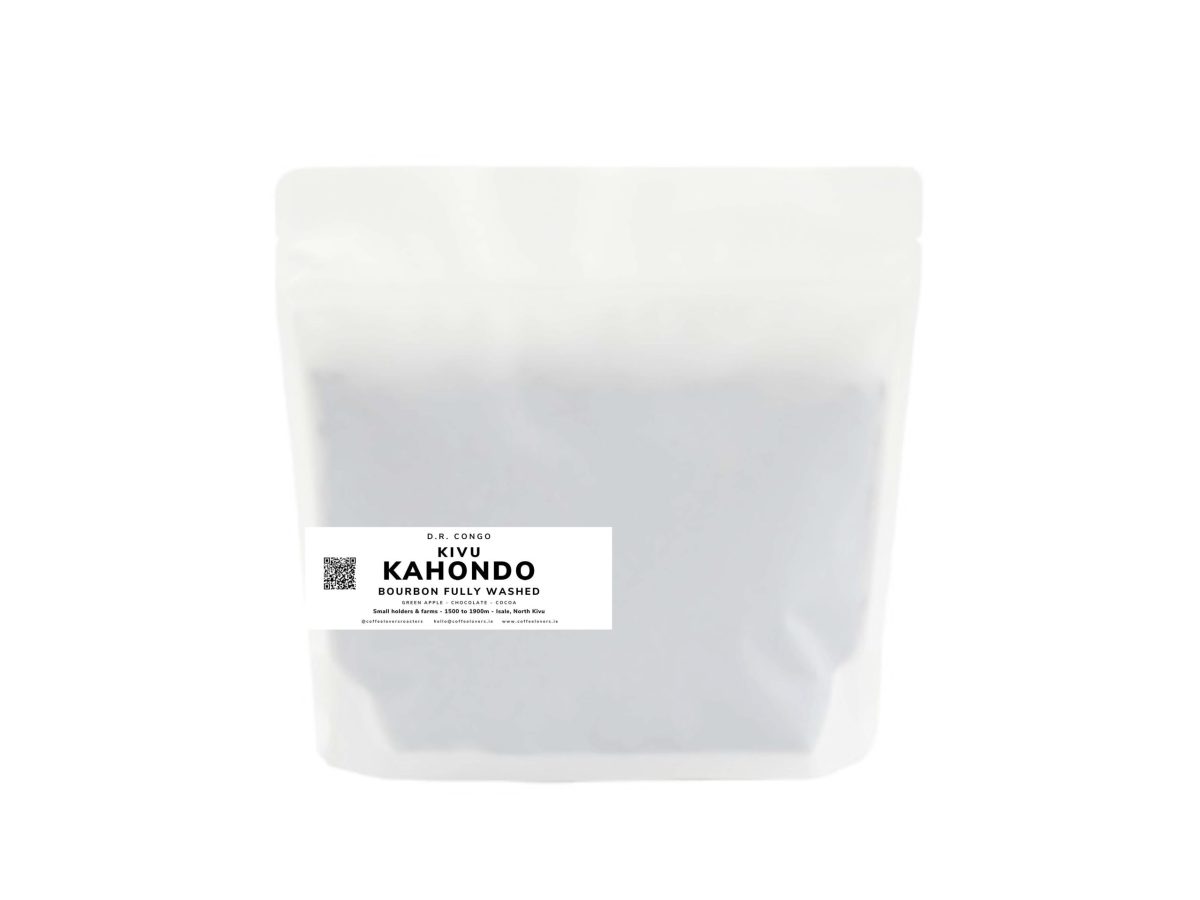| Size | 250 g |
|---|---|
| Origin | Congo |
| Region | Isale, North Kivu |
| Producer | Virunga Coffee Company |
| Farm | Small Coffee Holders, Smallholder farms |
| Altitude | 1.500 – 1.900 m |
| Harvest | 2023 |
| Variety | Bourbon |
| Process | Washed |
| Notas de cata | chocolate, cocoa, green apple |
Add a review
Description
About This Coffee
Kahondo Coffee Washing Station (CWS) is one of 7 washing stations belonging to Virunga Coffee Company to produce high quality coffees for the specialty market and increase premiums for the thousands of smallholder farmers in the region. Increasing production through good agronomic practice, improving quality through and obtaining internationally recognised certification in order to generate better revenue for farmers.
The Region
Kahondo village is located in the Isale region of Nord-Kivu (North of Lake Kivu), on the edge of Virunga National Park, bordered by Uganda to the east. The region has excellent conditions for speciality arabica production with plentiful rainfall, high altitude and highly fertile volcanic soils.
The Process
Ripe cherries are delivered to the station for careful sorting and floatation. Once the highest quality cherries are selected they are pulped to remove the skin and most of the fruit. The coffee is then placed straight onto raised African beds, retaining some of its sugary mucilage. This parchment coffee is then dried in the sun for an average of 14 days, until the optimum moisture content has been reached. At this point the coffee is rested in a cool, dry environment for 1-2 months, before being milled, sorted and graded by bean size.
History of Coffee in DR Congo
Although commercial production of green coffee did not begin in Congo in any meaningful way until the end of the nineteenth century, Robusta has been known to grow wild throughout the region for so long that 100 years ago Robusta was sometimes called “Congo coffee” regardless of where it was grown. In 1895, a well-known botanist, professor Lament, toured the country and declared it so suitable for growing coffee that it could become a “second Brazil,” and Arabica plantings increased dramatically. By 1905, half a million coffee plants were under cultivation and exports reached 41 tons.



